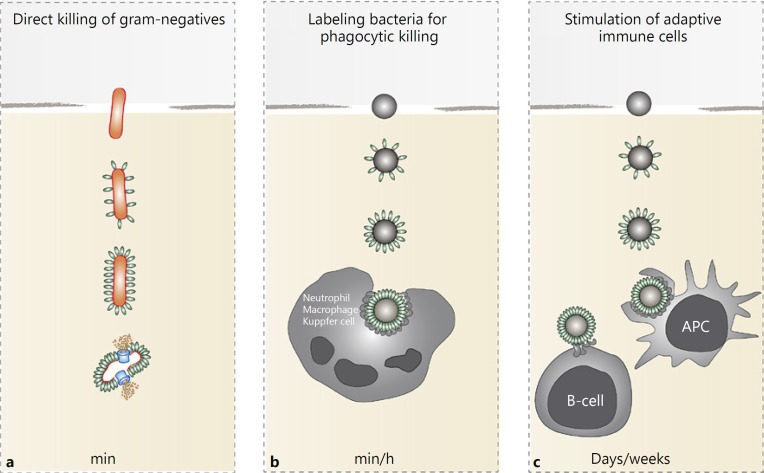Fig. 1.
Antibacterial effector functions of complement. a Complement activation results in formation of the membrane attack complex (MAC or C5b-9; blue) that rapidly kills Gram-negative bacteria (orange) without the help of immune cells. Gram-positive bacteria are resistant to MAC. b Complement labels bacteria with C3-derived products (C3b and C3bi; green) that stimulate engulfment of bacteria by phagocytes. Release of complement peptide C5a is crucial for attraction of phagocytes to the site of infection. c Bacterial labeling with C3-derived products also enhances antigen presentation to B cells and thereby triggers the development of an adaptive immune response.

